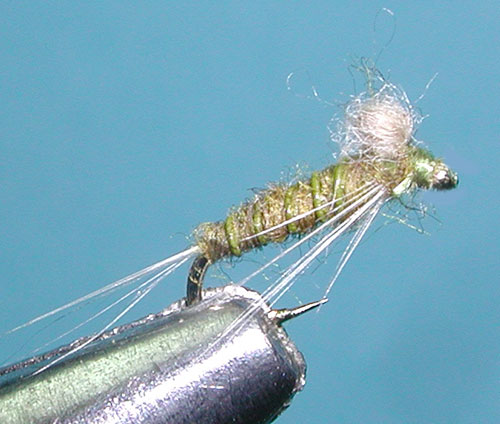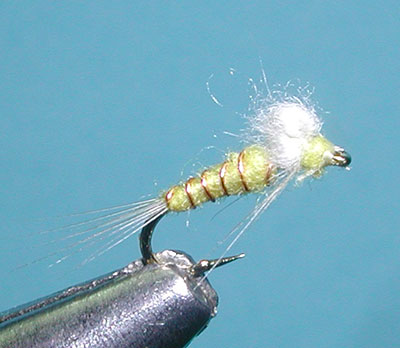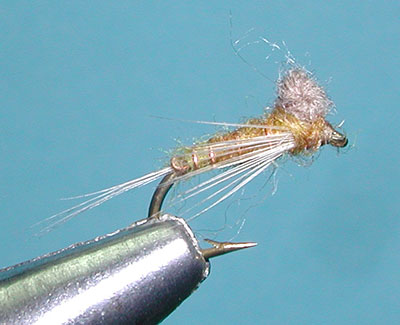

Floating Nymph, BWO Tying Instructions |
Materials:
|
|
Notes: There are many floating nymphs using foam, cdc, or hackles to float
the nymph at the surface. Mike Lawson of Henry's Fork Anglers developed an interesting pattern using a
ball of poly dubbing to float the fly. What makes this pattern unique from other floating nymphs is that the
profile of the nymph lays low within the surface film and is sighted by the angler from the ball of poly.
The poly dubbed wingpod has been used by others such as Darrel
Martin, who actually learned the technique from Klaus V. Bredow, a European tier. Mike Lawson attributed
his version of the pattern to one described in Doug Swisher and Carl Richards, "Selective Trout".
There are many color variations depending upon the specific mayfly. The floating mayfly should use the same
colorations as the adult dun.
| ||
Variations: |
|
 Floating Nymph, PMD |
Materials:
|
 Floating Nymph, Western Green Drake |
Materials:
|